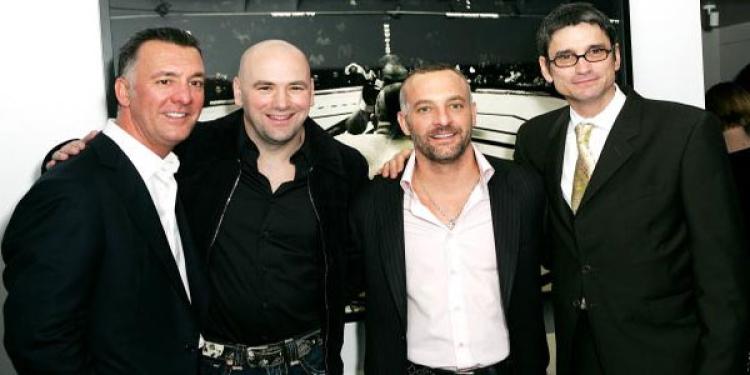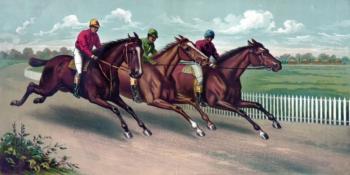The Strange History of MMA: Part 2
Posted: May 27, 2016
Updated: October 6, 2017

Part 2 of the strange history of MMA focuses on Zuffa’s purchase of the UFC, and some of the notable rivalries that helped catapult MMA into the public eye.
By the year 2000, SEG Entertainment (the company owning of the UFC) was bleeding money. A long-drawn out process to secure sanctioning for MMA had cost them millions, and they were on the verge of bankruptcy. Dana White, whom at the time was working as a cardio kickboxing instructor and boxing manager, heard gambling news that the UFC owners were looking to sell the promotion, and contacted his old friends from high school, Lorenzo and Frank Fertitta.

The Fertitta brothers were some of the most powerful individuals in Las Vegas. The owned a number of highly successful enterprises, but were most known as the owners of Station Casinos. White approached the Fertittas about buying the UFC in December of 2000. One of the most important moments in the strange history of MMA happened less than a month later, when SEG and the Fertitta brothers had come to an agreement to buy the UFC, and effectively the sport, for only $2 million.
Almost every financial advisor working with Frank and Lorenzo Fertitta told them that buying the UFC was a huge mistake. MMA was still seen as taboo. More spectacle than sport, and a brutal spectacle at that. Lorenzo Fertitta, however, saw what no one else did. “I had my attorneys tell me that I was crazy because I wasn’t buying anything. I was paying $2 million and they were saying ‘What are you getting?” He told Fighters Only Magazine. “And I said ‘What you don’t understand is I’m getting the most valuable thing that I could possibly have, which is those three letters: UFC. That is what’s going to make this thing work. Everybody knows that brand, whether they like it or they don’t like it, they react to it.”
The Pay-Per-View disaster
Lorenzo Fertitta’s connections with the Nevada State Athletic Commission helped him secure sanctioning for the sport in less than a year. The new UFC owners knew they had to make a good impression on their return to pay-per-view, and stacked their first event with three championship fights. In the main event, emerging superstar Tito Ortiz was set to defend his light heavyweight title against tough Belarusian wrestler, Vladimir Matyushenko.

The first show under the Zuffa banner turned out to be a disaster. Every fight on the main card went to a decision, and the audience members let their frustrations be known. In the middle of the main event, the pay-per-view broadcast time ran out, and fans at home couldn’t see the end of the fight. Dana White knew this was one of the worst moments in the strange history of MMA, calling UFC 33 “the worst event we’ve ever had,” and even told Joe Rogan, “I almost f—king killed myself that night.”
Despite their first event being a total disaster, the UFC began slowly gaining in popularity. The company managed to secure its first ever television deal with Fox Sports Net: The Best Damn Sport Show Period, who broadcasted highlights of the UFC on cable television. By the end of 2002, the UFC had gained a considerable fan base.
The biggest fight in UFC history
The rivalry between light heavyweight champion Tito Ortiz and Ken Shamrock had been boiling for years. It began in 1999, after Ortiz disrespected Shamrock and his team by flipping them off in a post fight celebration. Shamrock famously leapt onto the cage and screamed at Ortiz. The fight became more and more talked about over the next few years as Ortiz defended his championship belt without much competition. Finally, in 2002, it was announced that the two would fight at UFC 40.
The fight between Ortiz and Shamrock was billed as a “dream fight.” It was the first time that two fighters with a legitimate rivalry would clash. Many people were torn on who would win, as Ortiz was much younger and faster, but Shamrock had years of experience and incredible submission skills. The event sold out, and by the time the two fighters walked to the cage the fans could hardly contain their excitement.

The fight was hardly competitive, as the younger Ortiz continuously took Shamrock down and hit him with hard punches and elbows. Aside from a strong punch that Shamrock landed in the first round, Ortiz dominated. This bout proved to be a pivotal moment in the strange history of MMA. The pay-per-view buy rate was over three times larger than any event in the past, and the fight garnered mainstream coverage from a number of major media outlets. Some journalists believe UFC 40 saved the promotion from bankruptcy.
Referee John McCarthy said it best. “When that show (UFC 40) happened, I honestly felt like it was going to make it. Throughout the years, things were happening, and everything always looked bleak. It always looked like, this is it, this is going to be the last time. This is going to be the last year. But, when I was standing in the Octagon at UFC 40, I remember standing there before the Ortiz/Shamrock fight and looking around. The energy of that fight, it was phenomenal, and it was the first time I honestly said, it’s going to make it.”
The UFC continues to struggle
Although UFC 40 was a commercial success, the UFC as a whole continued to struggle. By 2004, the company had lost $34 million, and word began to spread that the Fertitta brothers were looking to sell the promotion.

In a last ditch effort to save the UFC, Dana White and the Fertitta’s came up with the idea of a reality TV show featuring fighters. Their concept was simple. Lock 32 fighters in a house together, and every week have them fight in the octagon. The winner would receive a six-figure contract with the UFC.
This idea was rejected by almost every media outlets they pitched to. It was not until they came to Spike TV, and offered to pay the $10 million production cost themselves that they were able to make a deal. The TV show, named The Ultimate Fighter would go on to save the UFC, and effectively the sport. It was without a doubt the most important events in the strange history of MMA.
Part 3 of the strange history of MMA will focus on the first season of the ultimate fighter, and how that show transformed the UFC into one of the most popular sporting event on the planet. Leave your comment below, and make sure to check out GamingZion’s online sportsbooks in the US for a full list of the best sports betting sites in the United States!
Part 1 of the strange history of MMA can be seen here.












